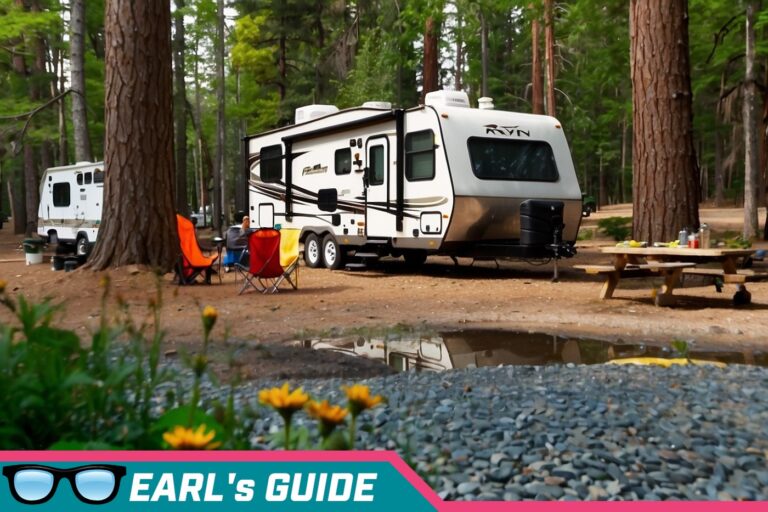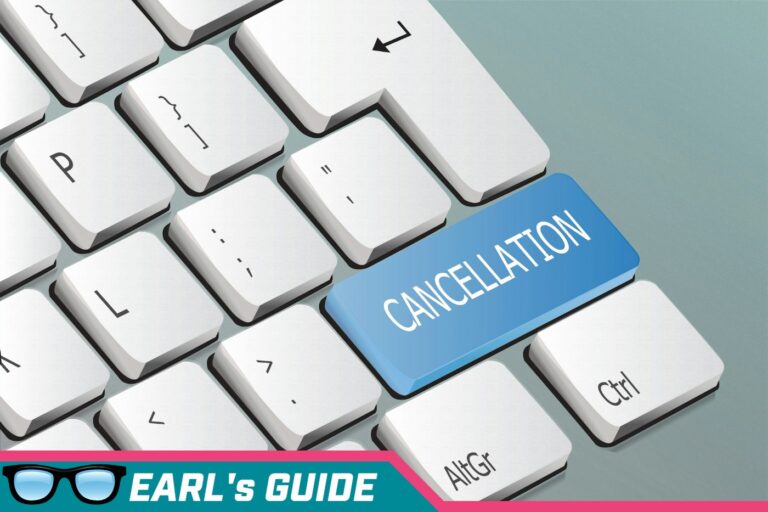Dynamic pricing is a powerful strategy that RV campgrounds can leverage to optimize revenue throughout varying seasons and in response to fluctuating demand. Staylist, with its robust reservation management system, offers campgrounds the tools necessary to implement dynamic pricing effectively. This article delves into understanding dynamic pricing on Staylist, setting up seasonal pricing and special offers, and analyzing performance to adjust prices according to demand.
Understanding Dynamic Pricing on Staylist
Dynamic pricing involves adjusting your prices in real-time based on demand / occupancy levels. This flexibility allows campgrounds to maximize revenue by capitalizing on peak demand periods while also attracting guests during slower times with lower rates. Staylist’s system facilitates this by allowing campgrounds to set up pricing that automatically adjusts based on predefined criteria.
For specific unit categories, dynamic pricing can be particularly advantageous. By categorizing units based on their type, location within the campground, or amenities offered, campgrounds can tailor pricing strategies to the perceived value of each category. This ensures that premium sites command higher prices during peak times, while basic sites might see more moderate adjustments.
Moreover, Staylist enables the setting of dynamic pricing for specific date ranges. This feature is crucial for managing seasonal variations in demand, allowing campgrounds to increase prices during high-demand periods like holidays or local events and decrease them during off-peak times to maintain occupancy.
Setting Up Seasonal Pricing and Special Offers
Seasonal pricing is a cornerstone of effective dynamic pricing strategies. By analyzing historical occupancy data and market trends, campgrounds can identify periods of high and low demand throughout the year. Staylist allows for the setup of seasonal pricing adjustments that automatically increase or decrease rates based on these patterns. For example, a campground can program Staylist to increase prices by a certain percentage during the summer months or around major holidays and decrease them in the offseason.
Special offers are another tool that campgrounds can use to adjust demand dynamically. These can include discounts for early bookings, last-minute deals, or special rates for specific guest segments like repeat visitors or local residents. Staylist’s system can manage these promotions by applying discounts automatically when the booking conditions are met, making it easy for campgrounds to run multiple promotions simultaneously without manual intervention.
Analyzing Performance and Adjusting Prices for Demand
The true power of dynamic pricing lies in the ability to continuously analyze performance and adjust pricing strategies in response to real-time data. Staylist provides campgrounds with analytics tools to monitor occupancy levels, revenue per available site or site category, and other key performance indicators (KPIs). By regularly reviewing this data, campgrounds can identify trends, such as certain sites or categories that are consistently in high demand or times when occupancy lags behind expectations.
Adjusting prices based on occupancy levels is a nuanced strategy that Staylist enables through percentage-based modifiers. For example, if occupancy for a specific unit category reaches 80%, prices for the remaining sites in that category can automatically increase by a set percentage. Conversely, if occupancy is lower than anticipated, prices can decrease to attract more bookings. This approach ensures that campgrounds are always positioned to maximize revenue, adapting to changes in demand with agility.
Modifiers to base rates on Staylist are applied on a percentage basis, allowing for granular control over pricing adjustments. This system is both powerful and flexible, enabling campgrounds to refine their pricing strategies over time. As occupancy data accumulates, campgrounds can tweak the thresholds and percentages used for automatic price adjustments, continually optimizing their dynamic pricing model for maximum revenue.
Staylist’s dynamic pricing capabilities represent a significant advancement for RV campgrounds, offering the potential to significantly increase revenue while maintaining high occupancy rates. By understanding how to effectively set up and manage seasonal pricing, special offers, and demand-based price adjustments, campgrounds can unlock the full potential of dynamic pricing. The key to success lies in leveraging Staylist’s analytics and automated pricing features to make data-driven decisions, ensuring that every site and unit category is priced to match its value to guests and its contribution to the campground’s overall financial performance.
Setting up Dynamic Pricing the right way – trust the pros
Implementing dynamic pricing within your RV campground’s reservation system is a sophisticated strategy that, when done correctly, can significantly increase your revenue and improve occupancy rates. However, the complexity of dynamic pricing models means that even a minor oversight or incorrect setting can lead to substantial financial losses. These losses can accumulate silently, often going unnoticed until they’ve already had a considerable impact on your bottom line. This is why ensuring the accuracy and efficacy of your dynamic pricing setup is not just recommended; it’s crucial.
The Critical Nature of Correct Dynamic Pricing Setup
Dynamic pricing relies on various parameters, including demand levels, seasonal variations, special events, and even day-of-the-week popularity. Each parameter must be carefully calibrated to reflect your campground’s specific market conditions and guest behavior patterns accurately. A mistake in setting these parameters – such as underestimating the demand for peak season or failing to adjust for a local event – can lead to rates that either deter potential guests due to high prices or leave money on the table through rates that are too low. The outcome is the same: lost revenue that directly affects your campground’s financial health.
Why Consultation with asktheearl.com is Invaluable
Given the stakes, partnering with experts like the team at asktheearl.com for a consultation on your dynamic pricing setup is a wise investment. Our team brings a wealth of experience and a deep understanding of the nuanced dynamics of campground pricing. We’ve tested the dynamic pricing module across a wide array of configurations and settings, learning valuable lessons on what works best under different circumstances.
Our consultation service is designed to ensure that your dynamic pricing system is calibrated perfectly to your campground’s unique needs. We help you identify the ideal parameters for your pricing model, ensuring that it responds optimally to changes in demand and maximizes revenue potential throughout the season. By leveraging our expertise, you can avoid common pitfalls and the risk of costly errors, ensuring that your dynamic pricing strategy contributes positively to your financial success from the outset.
Flexible Consultation Costs
We understand the importance of cash flow management for campgrounds, especially in planning for a successful camping season. That’s why asktheearl.com offers flexible consultation cost arrangements that can be spread out over the camping season. This approach ensures that accessing our expert guidance does not negatively impact your ongoing cash flow or revenue. Instead, it represents a strategic investment in your campground’s future profitability and operational efficiency.
Setting up dynamic pricing correctly is not just about adjusting numbers; it’s about strategically positioning your campground in the market to attract the right guests at the right times and at the right rates. A consultation with asktheearl.com ensures you have the expert support needed to make your dynamic pricing model a powerful tool for revenue generation and guest satisfaction. Let us help you unlock the full potential of your pricing strategy, safeguarding your revenue and setting the foundation for a prosperous camping season.
Dynamic Pricing Usage Scenarios
Dynamic pricing models in Staylist offer unparalleled flexibility, allowing campgrounds to tailor their pricing strategies to match seasonal demand, special events, and even specific weeks of the year. This adaptability ensures that campgrounds can optimize revenue while offering competitive rates to guests. Here are a couple of scenarios where dynamic pricing can be particularly effective in practice.
Scenario 1: Peak Season Pricing
Consider a campground located near a popular national park. During the summer months, when the weather is ideal for camping and the national park sees its highest visitor traffic, demand for campground sites skyrockets. By setting up a dynamic pricing model for these peak months, the campground can automatically adjust rates upwards to reflect the increased demand.
For instance, from June to August, the campground could implement a dynamic pricing model that increases site rates by 20% to 30% above the off-peak rates. This strategy not only capitalizes on the higher willingness of guests to pay during these prime vacation months but also helps manage the campground’s occupancy more effectively, ensuring that the increased demand translates directly into higher revenue.
Scenario 2: Special Event Weekends
Another scenario where dynamic pricing proves beneficial is during special events. Imagine a campground situated in a town that hosts a popular annual music festival. For the festival week, the demand for accommodations, including campground sites, significantly increases as attendees seek convenient places to stay.
In anticipation of this event, the campground can set a specific date range for the festival week in Staylist, applying a dynamic pricing model that significantly increases site rates for this period. For example, rates could be doubled for the week surrounding the festival, reflecting the high demand and limited availability. Additionally, the campground might offer special packages or amenities targeted at festival-goers, further leveraging the event to boost revenue.
To ensure guests are aware of and understand the reason behind the rate increase, clear communication about the special event pricing is vital. This transparency helps manage guest expectations and fosters a positive relationship, even in the context of higher prices.
The Importance of Flexibility and Communication
In both scenarios, the success of dynamic pricing hinges on two critical factors: flexibility and communication. Staylist’s system allows for precise adjustments to pricing models based on specific date ranges, granting campgrounds the flexibility to respond to various demand drivers throughout the year. This capability is invaluable for maximizing revenue during peak periods and capitalizing on special events that draw increased numbers of visitors.
Equally important is clear and proactive communication with potential guests about the reasons for price variations. Transparency about how rates are determined, especially during high-demand periods or special events, can mitigate any potential guest dissatisfaction. By explaining the value guests receive during these times—whether it’s the peak season experience near a national park or the unique opportunity to stay close to a festival—campgrounds can justify higher rates while maintaining guest satisfaction.
Dynamic pricing, when implemented thoughtfully and managed effectively through systems like Staylist, offers a strategic approach to pricing that can significantly enhance a campground’s revenue potential. By adapting rates to match demand fluctuations throughout the year, campgrounds can ensure they are always offering competitive, market-responsive pricing.
Dynamic Pricing Staff Training
Dynamic pricing, while a powerful tool for optimizing revenue, introduces complexity into the process of quoting rates to potential guests, especially during phone inquiries. The variability in rates based on demand, season, and specific dates means that the traditional method of providing a single, static rate over the phone is no longer adequate or accurate. This necessitates a shift in how staff are trained to handle rate inquiries, emphasizing the importance of using the availability bar in Staylist to provide the most current and accurate quote.
Training Staff on Dynamic Pricing Best Practices
Training staff to utilize Staylist’s availability bar for each inquiry is essential. This tool allows them to quickly input the guest’s desired dates of stay, instantly generating the current rate based on the dynamic pricing model in place for those specific dates. This approach ensures that guests are quoted the most accurate rate, reflecting the value of their stay at the time of inquiry.
Adopting this practice requires a paradigm shift for park staff who may be accustomed to a simpler, static pricing structure. However, the benefits of this added step are significant:
- Maximizing Revenue: By quoting rates based on real-time demand, campgrounds can capture the maximum revenue possible for each booking. This approach ensures that rates adjust according to the campground’s current pricing strategy, avoiding scenarios where a rate quoted too low leaves money on the table.
- Consistency Across Booking Channels: Training staff to use the availability bar for quoting rates ensures consistency across different booking channels, whether guests inquire via phone, email, or through the campground’s website. This consistency builds trust with guests, as they receive the same rate information regardless of how they contact the campground.
- Preventing Underquoting: Without checking the current rate through the availability bar, there’s a risk of staff underquoting based on outdated information or assumptions. This not only leads to lost revenue but can also create guest dissatisfaction if they are later charged a higher rate upon booking.
Overcoming Challenges and Resistance
Implementing this best practice may encounter initial resistance from staff who view the additional step as cumbersome. To overcome this, comprehensive training and clear communication about the benefits of dynamic pricing for both the campground and its guests are crucial. Highlighting success stories within the park, such as increased revenue from adopting dynamic pricing, can also help win staff buy-in.
Additionally, providing staff with the necessary tools and training to efficiently navigate Staylist’s interface will ease the transition. Simulated booking scenarios and role-playing exercises can help staff become comfortable with quoting dynamic rates during actual guest interactions.
The shift to dynamic pricing represents a significant opportunity for RV campgrounds to optimize their revenue, but it also requires a corresponding shift in how rates are quoted to potential guests. Training staff to use Staylist’s availability bar for every inquiry ensures that guests are provided with accurate, demand-based pricing, enhancing revenue opportunities and maintaining rate consistency across booking channels. Overcoming the initial challenges of implementing this practice pays dividends in the form of maximized revenue and improved guest satisfaction, underscoring the value of investing in comprehensive staff training on dynamic pricing best practices.
Dynamic Pricing combined with Promo Codes
Integrating dynamic pricing with promotional codes offers RV campgrounds an innovative way to enhance their revenue management strategy while providing value to guests. This combination allows campgrounds to maintain flexibility and responsiveness in their pricing while also rewarding guest loyalty and attracting new visitors through discounts or special offers. Promo codes can be linked to various incentives, such as membership in RV clubs like Good Sam, early booking discounts, or special event promotions, providing a multifaceted approach to pricing and marketing.
Leveraging Promo Codes with Dynamic Pricing
Strategic Discounting: Promo codes serve as a strategic tool within the dynamic pricing framework, allowing campgrounds to offer discounts off the dynamically adjusted rate. For instance, members of RV clubs or loyalty programs might receive a promo code that grants them a certain percentage off the current rate, incentivizing bookings and rewarding loyalty without compromising the campground’s overall pricing strategy.
Flexibility and Customization: Promo codes can be customized for different groups, seasons, or marketing campaigns, adding another layer of flexibility to the campground’s pricing and promotional activities. This enables campgrounds to target specific segments of their market with tailored offers, enhancing the effectiveness of their marketing efforts and potentially boosting occupancy during slower periods.
Encouraging Direct Bookings: By offering promo codes that can be redeemed only through direct bookings, campgrounds can encourage guests to book directly with them, bypassing third-party booking sites and avoiding commission fees. This not only increases the campground’s direct revenue but also strengthens the direct relationship with guests, providing opportunities for further engagement and loyalty building.
Tracking and Analytics: Integrating promo codes with dynamic pricing allows campgrounds to track the effectiveness of different promotional strategies in real-time. By analyzing redemption rates and the impact on bookings and revenue, campgrounds can refine their marketing strategies, adjust their offers, and optimize their pricing model based on data-driven insights.
Best Practices for Combining Dynamic Pricing with Promo Codes
Clear Terms and Conditions: Ensure that the terms and conditions for promo code redemption are clearly communicated to guests. This includes any restrictions, such as blackout dates, specific unit categories eligible for the discount, or expiration dates for the offer.
Strategic Distribution: Distribute promo codes strategically through channels most likely to reach your target audience. This might include email campaigns to past guests, social media platforms, partnerships with RV clubs, or targeted online advertising.
Balancing Discounts with Demand: While promo codes can attract bookings, it’s essential to balance the discounts offered with the demand dynamics captured by your dynamic pricing model. Ensure that promo code discounts do not significantly undercut your revenue management goals, especially during peak demand periods.
Continuous Monitoring and Adjustment: Regularly monitor the performance of promo codes in conjunction with your dynamic pricing strategy. Be prepared to adjust the discount rates, terms, or distribution strategy based on their impact on bookings and overall revenue.
By thoughtfully integrating dynamic pricing with promo codes, RV campgrounds can create a powerful synergy that maximizes revenue potential while offering value and incentives to guests. This approach not only enhances the attractiveness of the campground’s offerings but also supports strategic revenue management and marketing objectives, driving growth and guest satisfaction in a competitive market.

Robert Earl
Robert EarlRobert has 20+ years of experience as a Real Estate Agent, Coach & Digital Marketer. Robert Earl is passionate about teaching and empowering others to pursue their dreams and create sustainable income. Whether through a career in real estate, affiliate marketing, niche blogging, or transforming campgrounds into thriving communities, his proven strategies and techniques have helped numerous individuals and businesses succeed. Based on his years of experience and knowledge in the online marketing industry, along with his hands-on management in the Real Estate & RV Park sector, he has crafted a unique and effective approach to personal and professional growth. In addition to his business pursuits, Robert is also a CrossFit Online Level 1 Trainer (CF-OL1) and enjoys fitness activities, including Rucking workouts while traveling the country. His multifaceted career showcases his dedication to growth, innovation, and the pursuit of excellence in various domains.




